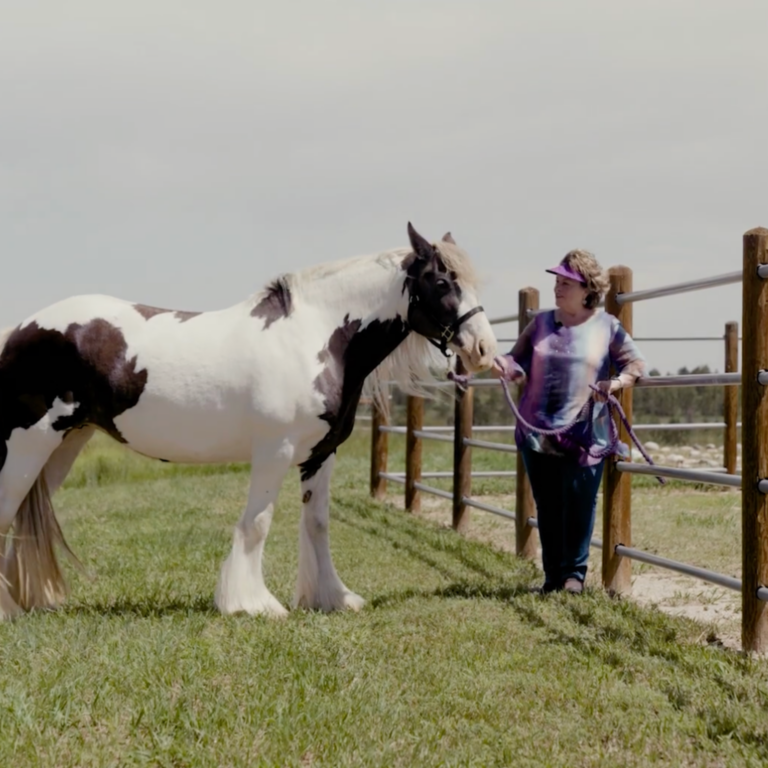Your front cinch is a key piece of tack: Along with your front-cinch rigging and latigos, it secures your saddle on your horse. It’s also a piece of tack that often needs replacing, because it rests snugly against your horse’s skin, absorbing rot-inducing sweat.
When you shop for a new front cinch, be sure to buy one that fits your horse correctly. If your cinch is too big, you can’t tighten it enough to do its job. If it’s too small, it may rub his sides when you tighten it, creating painful lesions. Plus, it’ll look awkward and may cause your saddle to slip to one side. Here’s an easy, accurate method to determine your horse’s cinch size.
1. Lead your horse to a level surface and have a helper hold him while you work. Standing on your horse’s left side, hold one end of a lead rope just behind his withers. Run the length of the rope down his right side, around his barrel, and up his left side just behind his elbow-where your front cinch would normally lie. Pull the rope snug, but not so taut that it presses into his skin. Then grasp the rope at the point where it meets the end. You’ll use this meeting point to take your initial measurement.
2. Continue to hold the rope at the meeting point as you remove it from your horse. With your helper, pull the rope straight, so it’s taut but not stretched. Measure the length from meeting point to end using a tape measure, as shown.
3. Now, use my formula to calculate your horse’s cinch size. First, divide your measurement by 2. Then subtract 3 from the result. If your figure isn’t a whole number, round up (for example, round 34.5 to 35). This is your horse’s cinch size in inches. Here’s a sample calculation based on a 77-inch measurement:
77 = 38.5
2
38.5 – 3 = 35.5
Rounding up to the next number tells you this horse needs a 36-inch cinch.
Based in Aubrey, Texas, Jackie Lee Jackson is a prominent breeder, trainer, and all-around coach on the Appaloosa circuit.
This article first appeared in the December, 2000 issue of Horse & Rider magazine.






